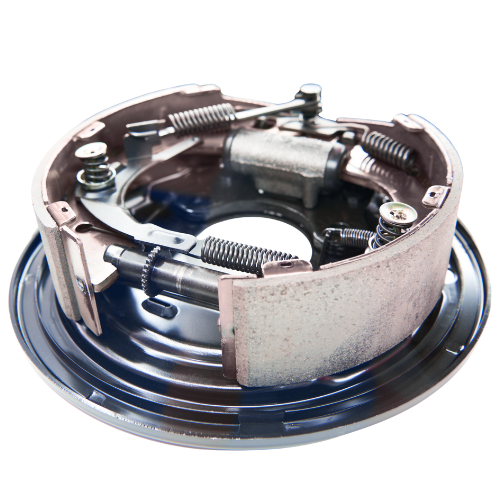Explore the four key components that make up a truck’s brake system—engineered to ensure safe, reliable, and powerful stopping performance on every road.

In the high-stakes environment of commercial trucking and logistics, fleet downtime represents one of the most substantial and controllable expenses faced by operators. Every hour a truck is stationary due to unplanned maintenance is an hour of lost revenue, creating a ripple effect of delayed shipments, compromised contracts, and increased overhead. Understanding the scale of this financial toll and the primary causes is the first critical step toward implementing effective cost control and safety strategies. The most direct pathway to reducing these operational leaks is through the strategic selection of reliable components, such as high-quality slack adjusters.
Recent industry analysis from the American Transportation Research Institute (ATRI) in their comprehensive report, An Analysis of the Operational Costs of Trucking, highlights that non-fuel operating costs, which include maintenance and repair, reached the highest levels ever recorded in 2024. While the cost increase for maintenance and repair itself showed a moderate increase of 3.1 percent in a recent year, the underlying issue is the unpredictability and sheer expense of unscheduled downtime. When a vehicle is unexpectedly sidelined, the cost extends far beyond the repair bill to encompass driver wages, towing expenses, emergency parts procurement, and significant administrative overhead. This pervasive challenge underscores why component integrity is a core business priority.
While factors such as driver error and accident damage contribute to lost operational hours, mechanical failure stands as the single most dominant cause of unscheduled fleet downtime. Within mechanical failures, issues with fundamental systems such as engine, electrical, tires, and air brakes, are consistently ranked at the top. The Federal Motor Carrier Safety Administration (FMCSA) frequently notes that brake system problems alone account for nearly 29 percent of all truck accidents, directly correlating to unplanned roadside stops and vehicle impoundment.
Component breakdowns often fall into two primary categories: rapid catastrophic failure and gradual wear-out. Many of the most common points of failure reside in the complex air brake system, which is constantly subjected to immense heat, pressure, and road contamination.
The common thread in many of these component failures is the quality of the part itself and the fleet's reliance on a reactive, rather than a proactive, maintenance strategy.

A critical insight for fleet managers is that emergency repairs cost significantly more than planned maintenance. A report by the FMCSA noted that every dollar invested in preventive maintenance can save up to four dollars in subsequent repair and emergency costs, including towing and roadside service. This massive return on investment highlights the value of focusing on component quality rather than initial purchase price, especially when considering the labor and tools required, such as a quality brake line bender for efficient installation.
Subpar parts, while offering an initial cost saving, typically fail faster and less predictably. This accelerates wear on adjacent, more expensive components. For example, a failing slack adjuster of trucks can cause excessive brake travel, placing undue stress on the brake chamber diaphragm and eventually leading to its premature rupture, requiring a costly brake chamber replacement. Likewise, inconsistent performance from a brake chamber can lead to uneven application of the brake shoes, necessitating early replacement of brake linings and potentially warping the brake drum.
Investing in high-quality parts, such as precision-engineered brake chambers or durable semi truck slack adjuster mechanisms, directly mitigates this risk by offering:
This shift in perspective transforms the cost of a part from a simple expense into a long-term investment in operational reliability and safety.
To combat the high cost of unplanned fleet downtime, the logistics industry is rapidly adopting predictive maintenance strategies. The goal is to detect a component's degradation before it reaches a failure point. A study cited by the Aberdeen Group found that fleets that implement preventive maintenance experience 20 percent less downtime than those operating reactively. Furthermore, research analyzed by Logistics Research showed that fleets implementing advanced predictive maintenance reduced their downtime by a remarkable 50 percent, dropping from an average of 120 hours per month to just 60 hours.
Predictive maintenance relies heavily on two elements: accurate data from telematics systems and the consistency of the installed components. When a fleet manager installs a high-quality part, its performance baseline is known and reliable. This makes it easier for AI and monitoring systems to flag deviations that indicate impending failure, allowing the team to schedule service during non-operational hours.
Key elements of a successful predictive maintenance strategy include:
GAPASA stands as an IATF 16949-certified global leader in the specialized manufacturing of premium-quality brake and trailer parts, dedicated to helping the trucking industry overcome the challenge of unpredictable fleet downtime. With a focus on delivering solutions you can trust, GAPASA engineers and produces a comprehensive range of critical components, including high-precision slack adjusters, durable brake chambers, S-camshafts, and advanced air disc brake calipers.
GAPASA's commitment to quality manufacturing directly mitigates the risk of downtime by offering:
In an industry where high costs and narrow profit margins squeeze profitability, minimizing fleet downtime is not merely an operational goal—it is a financial imperative. Component breakdowns, particularly within the critical air brake system, remain a primary threat to uptime. However, industry data, including findings from the American Transportation Research Institute and the Federal Motor Carrier Safety Administration, consistently prove that the strategic use of high-quality components and adherence to predictive maintenance programs yield substantial reductions in emergency repairs and associated costs. For logistics companies seeking to optimize their marginal costs and ensure maximum vehicle availability, prioritizing the superior quality of components like the slack adjuster and the brake chamber is the most effective way to build a resilient, safe, and profitable fleet.